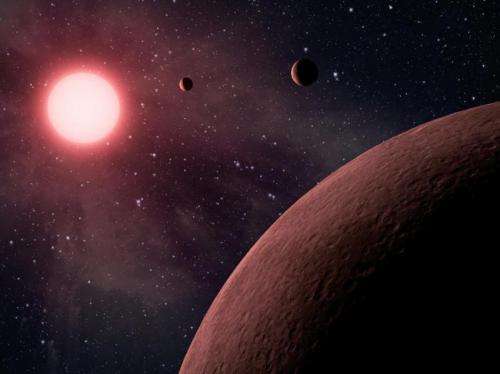Scientists question assumptions about planet formation

A paper published this week in Astrophysical Journal, led by Open University academics, has examined the exact structure and behaviour of the icy particles that collide and grow at the onset of planet-formation, in a series of revealing experiments at the UK's world-leading neutron source, ISIS.
Senior Lecturer in Astronomy at the School of Physical Sciences, Dr. Helen Fraser, says, "We are already aware of thousands of planets orbiting stars in our own galaxy, as remnants of star-formation, and yet there still isn't a model anywhere in science that can explain exactly how planets form. Our basic understanding is that small particles stick together, building bigger particles, which then also stick, and so forth, until eventually, we have a planet."
Dr. Fraser and her team conducted experiments, which were supported by the Science and Technology Funding Council (STFC) and UK Space Agency (UKSA), in the ISIS Neutron Facility at the Rutherford Appleton Laboratories in Harwell, where they recreated icy particles like those involved in building planets. The results question our understanding of the sticking processes contributing to these first steps in planet-making. By studying the structure and surfaces of the ice to ascertain why the particles might (or might not) stick together, the OU-led team found that even at very low pressures and temperatures the surfaces of the icy particles began to melt, which would make sticking much easier when the particles collide and come in contact.
"The experiments have suggested that the ice surface structure is fundamental to whether icy particles stick or not," said Dr. Sabrina Gaertner, the postdoctoral researcher who led the paper. "The good news with what we have learned is that ice could act as a "glue" in planet building processes, but the tough news is that whilst the conditions most suited to ice-sticking are easy to obtain in the laboratory, they are unlikely to be found in space. In solving one mystery we have opened the door to many more questions – it's still not clear exactly how planets form."
More information: S. Gärtner et al. Micrometer-sized Water Ice Particles for Planetary Science Experiments: Influence of Surface Structure on Collisional Properties, The Astrophysical Journal (2017). DOI: 10.3847/1538-4357/aa8c7f
Journal information: Astrophysical Journal
Provided by The Open University



















